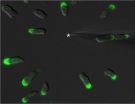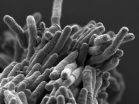(Press-News.org) New research suggests guidelines on children's exposure to radio frequency waves from technology are confusing for parents.
The review into the polices of 34 countries, carried out by Dr Mary Redmayne, from the Department of Epidemiology and Preventive Medicine at Monash University, found varying degrees of advice about children's exposure to radio frequency electromagnetic fields (RF-EMF).
RF-EMFs are emitted from technology including WiFi, tablets and mobile phones. Associated with an increased risk of some brain tumours in heavy and long-term phone users, RF-EMFs have also been linked to biological changes including increased production of free radicals in the body. Dr Redmayne said that whilst this, and other observed effects, were not in themselves 'health effects' if the body did not have the chance to repair the related damage and restore balance it could eventually lead to a variety of health effects.
"Where RF-EMF is responsible for this imbalance, then the chance to repair is most likely to come with periods of minimal RF-EMF exposure such as at night time, when WiFi can be turned off and devices can be put in flight mode or switched off. Such steps to minimise children's exposure are recommended in many countries including Denmark, Finland, France, Germany, India, Israel, and Switzerland" she said.
Dr Redmayne said there was continuing concern among researchers and the public about the possible detrimental effects for young people from their exposure to RF-EMFs.
"In recent years there has been an amazingly rapid uptake in the use of mobile phones and other wireless devices. Increasingly younger children are using these devices, and we know they are more vulnerable to environmental harm than adults," she said.
"However safety regulations and guidelines in most parts of the world only consider short-term heat and shock effects, and have not traditionally considered chronic or very low exposure," Dr Redmayne said.
The review found a wide variety of different protocols and guidelines in the 34 countries. Australia's legislation is based on scientific research, but limited to acute heating effects, such as heat-damage, shocks and burns. It does not consider effects from long-term or low exposures because the science for how these occur is not understood. However, the Australian Radiation Protection and Nuclear Safety Agency does suggest reducing children's exposure.
Russia and China's regulations went further by advising that exposures are low enough so that they do not prompt the body's processes to take protective action, both in the short and long term. Exposure levels in Russia and China were based on scientific research done in each respective country.
Some countries set lower, but manageable maximum exposure levels, as a precautionary approach.
The review also found some official bodies, including the European Parliament and the European Environment Agency, now recommend those aged under 18 to increase the distance of the head and body from devices including using a headset or speaker phone, use a wired landline, and sending text messages rather than calling. Several countries advised schools and pre-schools to prefer wired over WiFi/WLAN (such as Austria, France, Israel, Germany, Russia) and to offer education in schools on RF-EMF exposure issues (Russia, Tunisia, Turkey).
Dr Redmayne said the wide range of policy approaches can be confusing to parents and educational facilities wanting to know what is the best thing to do for their children.
"The message on RF-EMFs is really in the same category as health advice around diet and exercise: it's important to be aware and take steps to minimise exposure to radiofrequencies as part of daily life."
Dr Redmayne recommended using and storing a device at least 20cm away from the body, and when using devices offline then to put them in flight mode, turn WiFi off at night, and to avoid keeping devices in the bedroom.
The review was published in Electromagnetic Biology and Medicine.
INFORMATION:
ARLINGTON HEIGHTS, Ill. (July 7, 2015) - Parents of kids with severe allergies know how scary a severe allergic reaction (anaphylaxis) is. New research offers clues as to why some kids can have a second, related reaction hours later - and what to do about it.
A study in the Annals of Allergy, Asthma and Immunology, the scientific publication of the American College of Allergy, Asthma and Immunology (ACAAI), examined records of 484 children seen in an emergency department (ED) for anaphylaxis. The researchers tracked whether there was a second, follow-up reaction. Delayed ...
When Greek mythology and cell biology meet, you get the protein Callipygian, recently discovered and named by researchers at The Johns Hopkins University for its role in determining which area of a cell becomes the back as it begins to move.
The findings, made in the amoeba Dictyostelium discoideum, shed light on how symmetrical, round cells become "polarized," or asymmetrical and directional. A summary of the findings was published online June 30 in the Proceedings of the National Academy of Sciences.
"Cells have to have a front and a back to migrate," says Peter ...
Scientists have discovered new ways in which the malaria parasite survives in the blood stream of its victims, a discovery that could pave the way to new treatments for the disease.
The researchers at the Medical Research Council's (MRC) Toxicology Unit based at the University of Leicester and the London School of Hygiene & Tropical Medicine identified a key protein, called a protein kinase, that if targeted stops the disease. The study is published today (Tuesday) in Nature Communications.
Malaria is caused by a parasite that lives inside an infected mosquito and ...
Testing thousands of approved drugs, EPFL scientists have identified an unlikely anti-tuberculosis drug: the over-the-counter antacid lansoprazole (Prevacid®).
Tuberculosis continues to be a global pandemic, second only to AIDS as the greatest single-agent killer in the world. In 2013 alone, the TB bug Mycobacterium tuberculosis caused 1.5 million deaths and almost nine million new infections. Resistance to TB drugs is widespread, creating an urgent need for new medicines. EPFL scientists have now identified lansoprazole, a widely used, over-the-counter antacid, as ...
New research from the University of Copenhagen and Herlev and Gentofte Hospital shows that high vitamin C concentrations in the blood from the intake of fruit and vegetables are associated with a reduced risk of cardiovascular disease and early death.
Fruit and vegetables are healthy. We all know that. And now there is yet another good reason for eating lots of it. New research from the University of Copenhagen shows that the risk of cardiovascular disease and early death falls with a high intake of fruit and vegetables, and that this may be dued to vitamin C.
The ...
CHARLOTTESVILLE, VA (JULY 7, 2015). Researchers at Brown University examined three magnetically programmable shunt valves to see if the magnetic field emissions of headphones can cause unintentional changes in shunt valve settings. Based on their findings, the researchers state that it is highly unlikely that commercially available headphones will interfere with programmable shunt valve settings. Full details of this study can be found in "Programmable shunts and headphones: Are they safe together?" by Heather S. Spader, MD, and colleagues, published today online, ahead ...
CHARLOTTESVILLE, VA (JULY 7, 2015). Researchers conducted a prospective observational study in elderly patients and adult patients receiving antiplatelet therapy who presented with mild head injury at two trauma hospitals in Vienna: the Trauma Hospital Meidling and the Donauspital. The focus of the study was to see if blood serum levels of S100B protein in these patients could help identify whether their injuries included intracranial bleeding. If there was no indication of intracranial hemorrhage, these patients would not need additional testing or hospitalization. The ...
Policymakers and developers planning high-density housing near public transit with the goal of reducing automobile use and greenhouse gas emissions that contribute to global warming need a clearer understanding of the health risks from air pollution that may be created if that housing is also built near busy roads and freeways, according to new research by Keck School of Medicine of the University of Southern California (USC) scientists.
The study is one of the first to focus on the burden of heart disease that can result from residential exposures near major roadways ...
Weather is frequently portrayed in popular music, with a new scientific study finding over 750 popular music songs referring to weather, the most common being sun and rain, and blizzards being the least common. The study also found many song writers were inspired by weather events.
The study, led by the University of Southampton, together with the Universities of Oxford, Manchester, Newcastle (all part of the Tyndall Centre for Climate Change Research) and the University of Reading analysed the weather through lyrics, musical genre, keys and links to specific weather ...
Faith-based organisations [1] are crucial in achieving the promise of universal health coverage--an adequate standard of health care for all people--especially for poor and marginalised groups, according to a new three-part Series on faith-based health care, published in The Lancet. The Series argues that building on the extensive experience, strengths, and capacities of faith-based organisations (eg, geographical coverage, influence, and infrastructure) offers a unique opportunity to improve health outcomes.
Because of their broad reach and influence, faith-based groups ...

